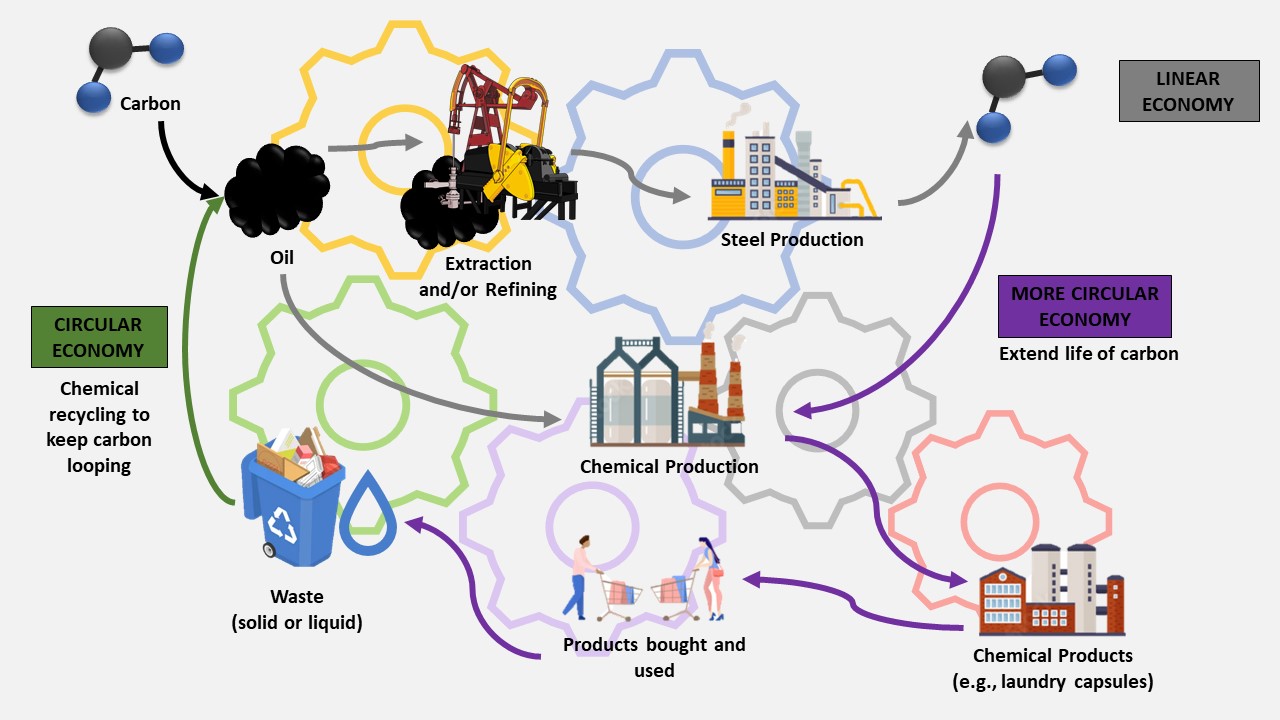BEST OVERALL ENTRY – ONE IMAGE PHOTO COMPETITION

Congratulations to Melissa Marques who won ‘Best Overall Entry’ with ‘Gearing up for sustainable circular systems.’
We live in a chaotic world with an economic system based on consumerism. Our modern production and consumption systems have evolved to guarantee that we can access any products we could ever want with ease, and products themselves have become extremely sophisticated. Yet, manufacturing systems are now so complex that we cannot understand how the things we buy daily are made or what the raw materials even are. Because it is hard to grasp where our products come from, we often assume that they are a result of well-oiled manufacturing and distribution systems, brought to shop shelves and to our homes in an optimized fashion.
Nevertheless, this assumption is often terribly mistaken. Indeed, the current production systems can be quite wasteful. Industries are still disjointed, each buying the raw materials they need from extractors and wasting some of them at the end of their process, as if raw materials or waste space were infinite resources in our planet. Take the steel and chemical industries as examples. They both still work predominantly in a linear economy model. Steel production requires carbon, and this carbon comes mainly from fossil sources such as oil, gas, and coal. At the end of steel production, much of this carbon is currently emitted to the atmosphere. The problem with this model is that the carbon molecules had been capture by nature from the atmosphere and had been stored in oil reserves for millions of years. By indiscriminately releasing such carbon back to the atmosphere in the form of greenhouse gases, the steel industry in this example contributes to unbalancing the planet’s atmosphere causing climate change.
Through our research, we have uncovered a better, more circular, approach for the carbon being released by the steel industry, and this approach is being put into practice by real firms right now. The key to this approach is that the steel industry is not the only one that needs carbon as a raw material – indeed, chemical companies also purchase carbon extracted from oil, gas, and coal. So, could the chemical industry use the carbon wasted from steel production rather than extracted directly from oil and other fossil sources? That is precisely what companies such as Lanzatech and Unilever have partnered up to do. Lanzatech has created an innovative technology that, though biochemical processes, can capture the carbon emissions from the steel industry and produce ethanol. Through collaboration with chemicals manufacturers, this ethanol can be used to produce surfactants – which are ingredients that form the basis of several consumer products, such as Unilever’s laundry capsules. By adding two gears into the whole system through close collaboration, companies such as Lanzatech and Unilever are creating a smarter, more environmentally conscious, supply chain without changing the product effectiveness or the consumer experience.
However, although the partnership between these companies creates an improved system compared to the traditional linear one, this system needs an additional gear to become fully circular. Chemical products and laundry capsules are bought and used daily around the globe, ending up as solid rubbish or as particles mixed with our water streams. We still need to scale up chemical recycling technologies and other forms of innovative recycling that can transform the carbon present in a multitude of solid and liquid waste back to carbon as oil. In the future, reverting waste back to oil will reduce the need for carbon from fossil sources to a minimum, keeping as much carbon as possible in a perpetual loop within our economy.
Through this interesting case study of collaborations between distinct industries to reduce the overall carbon being extracted from nature, we illustrate that circular economy is a smarter but also more complex system. Adding gears to already complicated supply chains inevitably makes them harder to manage; however, the best machines are often comprised by a multitude of parts, all working in harmony towards a common purpose. Understanding how each part works, and what the emergent behaviour of them working together is, will prove essential to help us gear up and transition to a more circular and sustainable world.